The man who changed the way we live

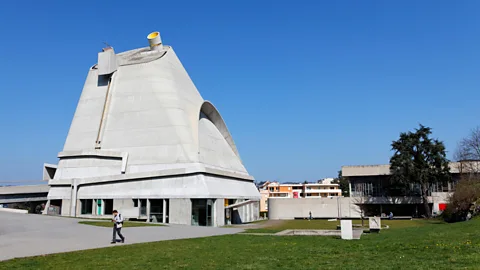 Alamy
AlamyControversial yet visionary, gifted but divisive, Le Corbusier’s influence continues to be felt today, writes Jonathan Glancey.
Such is the quality of the architect Le Corbusier's work that this summer Unesco made the radical decision to list 17 of his buildings in seven countries as a collective World Heritage Site.
If you get to see any of these compelling buildings, from purist white villas of the 1920s and ‘30s like the Villa Savoye at Poissy to the post-war Unité d’Habitation apartment block in Marseilles, the lyrical pilgrimage chapel of Notre-Dame-du-Haut at Ronchamp, the Chandigarh Capitol Complex or Tokyo’s mid-1950s National Museum of Western Art, you may well come away with a sense that you have experienced both a lucid creative talent at work and something – a great deal in fact – of the poetry of architecture.
Born in Switzerland in 1887, the young Charles-Edouard Jeanneret began his professional life as a watch engraver, although by 20 he was already deg and building a number of successful Arts & Crafts-style houses. At the time he was much influenced by the English critic, John Ruskin. Needing to expand his intellectual and artistic horizons, he took himself off on sketching tours of the ancient and vernacular buildings of both sides of the Mediterranean.
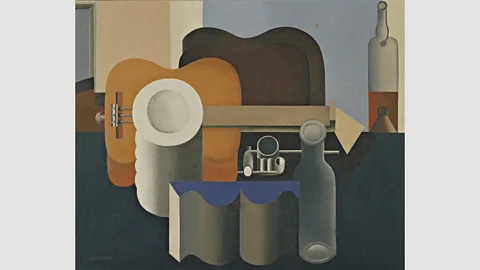 MoMA
MoMAHe visited Istanbul, was thrilled by the Parthenon in Athens and he had a revelatory architectural experience of what modern architecture might be when he came across the Charterhouse of Galluzo, a serene Carthusian monastery near Florence. He found work with the most progressive architectural practices of the time in and and in 1917 established himself in Paris as an artist, polemicist and architect under the nom-de-plume, Le Corbusier.
The white Cubist villas he built in Parisian suburbs in the 1920s and ‘30s sealed his reputation as surely as his iconoclastic architectural manifesto Vers une Architecture (Toward an Architecture, 1923), which spoke breathlessly of a new architecture - of the house as a "machine for living" - of design influenced as much by the structures of the latest aircraft and racing cars as by those of Gothic cathedrals and classical temples.
Design for life
Hugely influential from the words ‘Villa Savoye’ - the most challenging and impeccable of his white Parisian villas - Le Corbusier raced ahead of those who followed him. By the time British and American architects, for example, had begun to build in earnest in imitation of their hero, Le Corbusier had already changed tack.
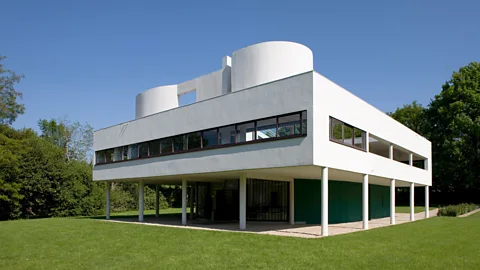 Alamy
AlamyFrom 1945 he chose to build in raw, and sometimes weather-boarded concrete as if sculpting buildings. This method also allowed him to design imaginative buildings for clients with little money, like the monks of the spiritually charged monastery he created at Evreux-sur-l'Arbresle in the late 1950s. Shortly before he died, he was proposing buildings in steel and he had already experimented with tented structures making use of the very latest lightweight materials.
Whatever the materials he worked in, and whatever the brief - villas, museums, social housing, churches, civic monuments, a Palace of the Soviets for Moscow, a dramatic facelift for Algiers or a hospital in Venice - and whether built or not, Le Corbusier's designs were always original. Far from being a purveyor of concrete boxes, he was first and foremost an artist whose best known and most expressive medium was architecture. Imbued with a creative spirit and a guiding intelligence very much their own, these have always been more than demanding buildings to emulate or copy.
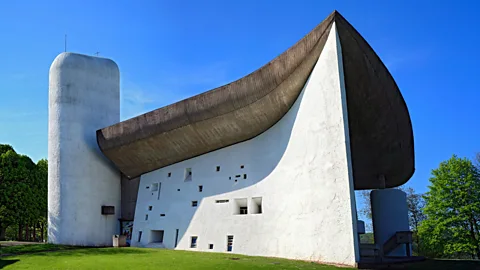 Alamy
AlamyAnd, yet, despite the advocacy of Unesco, and more than half a century after his death, Le Corbusier remains a controversial figure. There are those who believe that, somehow, he was single-handedly responsible for the rise of thousands of fourth-rate concrete high-rise housing schemes around the world and for the apparently gratuitous destruction of all too many city centres in the 1950s and ‘60s, as national and local governments sought modernity at all costs and whether or not their cities had been damaged by bombing during World War Two.
Brutalism and brutality?
As pretty much anyone will understand who has ever visited such architectural gems as the Millowners’ Association Building in Ahmedabad (1954), not listed by Unesco – where architecture and nature work hand-in-hand – or the Dominican priory of Saint-Marie-de-la-Tourette (1958) at Eveux-sur-l’Arbresle, with its numinous play of ethereal and shadowy spaces, Le Corbusier was a great artist incapable of deg a mean thing. He has, though, been accused of crimes and misdemeanours beyond urban planning and architecture.
Last year - the 50th anniversary of his death - witnessed the publication of a trio of French books, each attempting to undermine his creative legacy by claiming that Le Corbusier was an anti-Semitic fascist, and a sort of cross between Albert Speer and a messianic 1950s local authority planner hell-bent on demolishing magnificent old cities for ideological reasons. While his relentless desire to build led him to work for the Nazi puppet Vichy regime during WWII, and although he said several dumb things about politics, it was his views on urban planning that were perhaps far more unsettling.
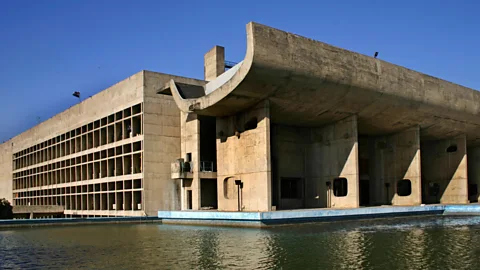 Alamy
AlamyIn his book La Ville Radieuse (The Radiant City, 1935), for example, Le Corbusier describes the classical harmony of central Stockholm as “frightening chaos and saddening monotony”. Undamaged by WWII – Sweden was a neutral country – swathes of Stockholm were wrecked in ensuing decades by politicians, planners and architects following, as they thought, in the footsteps of their hero.
While it is hard to overstate the immense and largely negative influence Le Corbusier and his pugnacious writings had on a generation of neophiliac city councils and awestruck architects, his work – his buildings – improve with age and acquaintance. The Unité d’Habitation, for example, designed originally for working class Marseillaise families, who knew it as ‘La Maison du Fada’ (House of the Crazy) is now cherished by the professional and creative people living here who understand that its design owes as much to Le Corbusier’s radical modern ideas as it does to his obsession with what he saw as the perfection of the Charterhouse of Galluzo, a Carthusian monastery near Florence.
Worldly and ascetic, wise and naive, aloof and humble Le Corbusier saw in this beautifully planned monastery a way of living that ought to suit 20th-Century men and women as it had religious celibates of 500 years earlier.
Political controversies aside, Le Corbusier’s influence, along with his ‘world heritage’ buildings, lives on. Ever present, Le Corbusier, perhaps the most creative and certainly the most contrary architect of the 20th Century, continues to delight, infuriate, inspire and confuse in more or less equal measures.
If you would like to comment on this story or anything else you have seen on BBC Culture, head over to our Facebook page or message us on Twitter.
And if you liked this story, sign up for the weekly bbc.com features newsletter, called “If You Only Read 6 Things This Week”. A handpicked selection of stories from BBC Future, Earth, Culture, Capital, Travel and Autos, delivered to your inbox every Friday.
